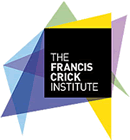About the Project
This 4-year PhD studentship is offered in Dr Samuel Rodrigues’ Group based at the Francis Crick Institute (the Crick).
The Applied Biotechnology Laboratory at the Crick Institute develops first-in-class technologies that can be deployed widely to accelerate neuroscience and reduce the number of people suffering from brain disorders. To do so, we combine rigorous bioengineering with an expertise in biotechnology entrepreneurship that is unique among academic labs, allowing us to identify more important unmet needs and deploy solutions more rapidly.
The exact project will be determined upon joining, and trainees are encouraged to develop their own project ideas and to work on multiple projects. Trainees will work at the intersection of genomics, microscopy, viral vectors, and more traditional mechanical/electrical engineering. Examples of past and current projects include the development of Slide-seq [1], a spatial transcriptomic technique that enables researchers to visualize the expression of every gene in the genome simultaneously; Implosion Fabrication [2], a bio-inspired approach to three-dimensional nanofabrication; and Timestamps [3], a method that allows the age of RNAs to be deduced from RNA sequencing.
Sample project
All psychiatric diseases are associated with changes in the structure and function of synapses between neurons in the brain, but existing brain-mapping (connectomics) technologies, such as electron microscopy (EM), are insensitive to the distribution of the proteins and molecules that determine synaptic function. We have invented a new approach to connectomics that combines optical superresolution techniques such as Expansion Microscopy [4] with multiplexed antibody staining techniques such as CODEX [5] to map gene expression and circuitry simultaneously. We call this approach molecularly-annotated connectomics. Ultimately, we aim to develop the technology to the point where it is robust enough that it can be deployed across the world to enable bench-top brain mapping in every neuroscience laboratory.
As a testbed for development, we now seek to apply this technique to systematically map the microcircuitry of the mouse and human brains. Many therapeutics for brain disorders are tested initially in mouse models before being trialed in humans, and much of our understanding of the brain is built up on research in mice. However, recent discoveries indicate that there are major differences in gene expression between mice and humans, which may prevent results obtained in mice from translating to the human brain. Leveraging recently developed techniques for expressing genes in cultured human brain tissue, we will create a comprehensive catalog of the circuitry of the mouse and human cortexes. We will then use our catalog to study how patterns of connectivity differ between homologous cell types in the mouse and human brains. This research will enable the development better mouse models and better interpretations of basic research and preclinical data. In the long term, by identifying elements of neural circuitry that are conserved or that are different between mice and humans, the connectomic information we uncover will be used to derive fundamental insights into the workings of the brain, and to develop new, biologically-inspired approaches to artificial intelligence.
The student will have the opportunity to participate both in the technology development and scientific application of the technology.
Candidate background
The ABL applies principles of engineering to solve major problems in biology and biomedicine. We are seeking students with backgrounds in bioengineering, other disciplines of engineering, or the physical sciences; as well as students with backgrounds in biology, neuroscience, medicine, or related fields who want to take an engineering approach to science. The successful candidate will be ambitious, driven, and will care deeply about maximizing impact in the world. Prior research experience with wet lab work is encouraged but not required.
Talented and motivated students passionate about doing research are invited to apply for this PhD position. The successful applicant will join the Crick PhD Programme in September 2021 and will register for their PhD at one of the Crick partner universities (Imperial College London, King’s College London or UCL).
Applicants should hold or expect to gain a first/upper second-class honours degree or equivalent in a relevant subject and have appropriate research experience as part of, or outside of, a university degree course and/or a Masters degree in a relevant subject.
APPLICATIONS MUST BE MADE ONLINE VIA OUR WEBSITE https://www.crick.ac.uk/careers-and-study/students/phd-students BY 12:00 (NOON) 12 November 2020. APPLICATIONS WILL NOT BE ACCEPTED IN ANY OTHER FORMAT.
References
1. Rodriques, S.G., Stickels, R.R., Goeva, A., Martin, C.A., Murray, E., Vanderburg, C.R., . . . Macosko, E.Z. (2019)
Slide-seq: A scalable technology for measuring genome-wide expression at high spatial resolution.
Science 363: 1463-1467. PubMed abstract
2. Oran, D., Rodriques, S.G., Gao, R., Asano, S., Skylar-Scott, M.A., Chen, F., . . . Boyden, E.S. (2018)
3D nanofabrication by volumetric deposition and controlled shrinkage of patterned scaffolds.
Science 362: 1281-1285. PubMed abstract
3. Rodriques, S., Chen, L., Liu, S., Zhong, E., Scherrer, J., Boyden, E. and Chen, F. (2020)
Preprint: Recording the age of RNA with deamination.
Available at: BioRxiv. https://www.biorxiv.org/content/10.1101/2020.02.08.939983v1
4. Chen, F., Tillberg, P.W. and Boyden, E.S. (2015)
Expansion microscopy.
Science 347: 543-548. PubMed abstract
5. Goltsev, Y., Samusik, N., Kennedy-Darling, J., Bhate, S., Hale, M., Vazquez, G., . . . Nolan, G.P. (2018)
Deep profiling of mouse splenic architecture with CODEX multiplexed imaging.
Cell 174: 968-981.e915. PubMed abstract

 Continue with Facebook
Continue with Facebook

